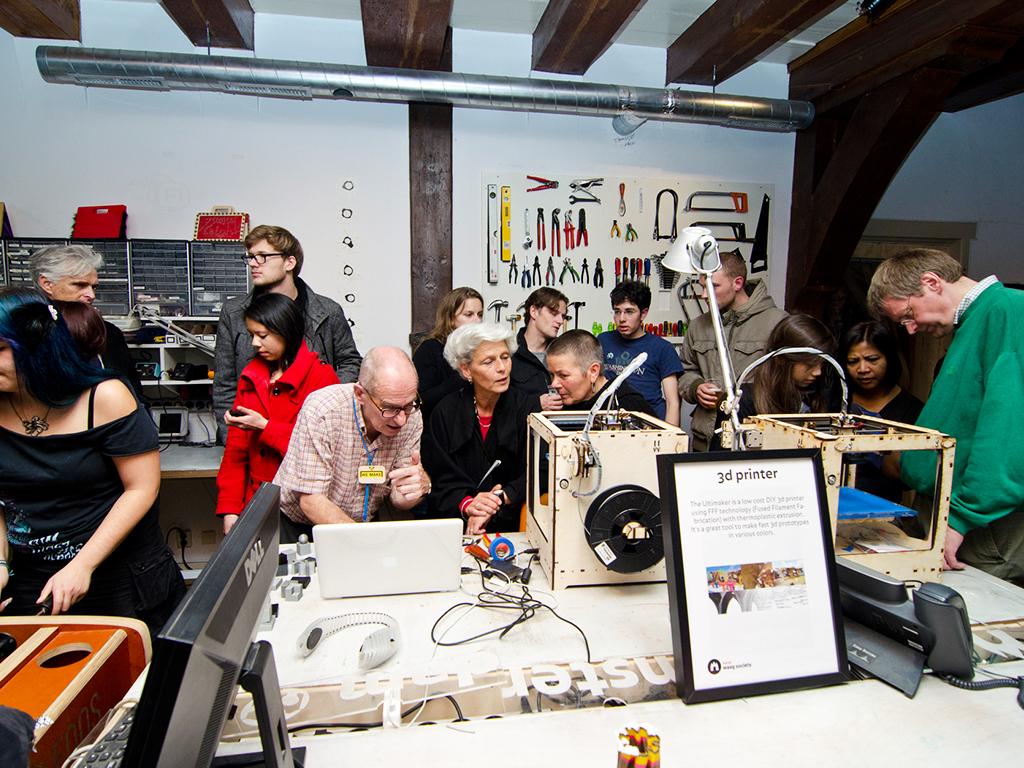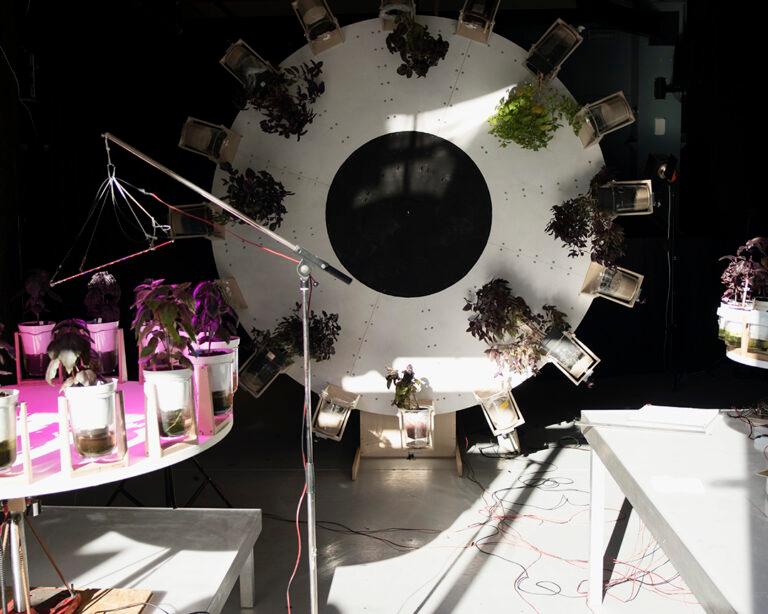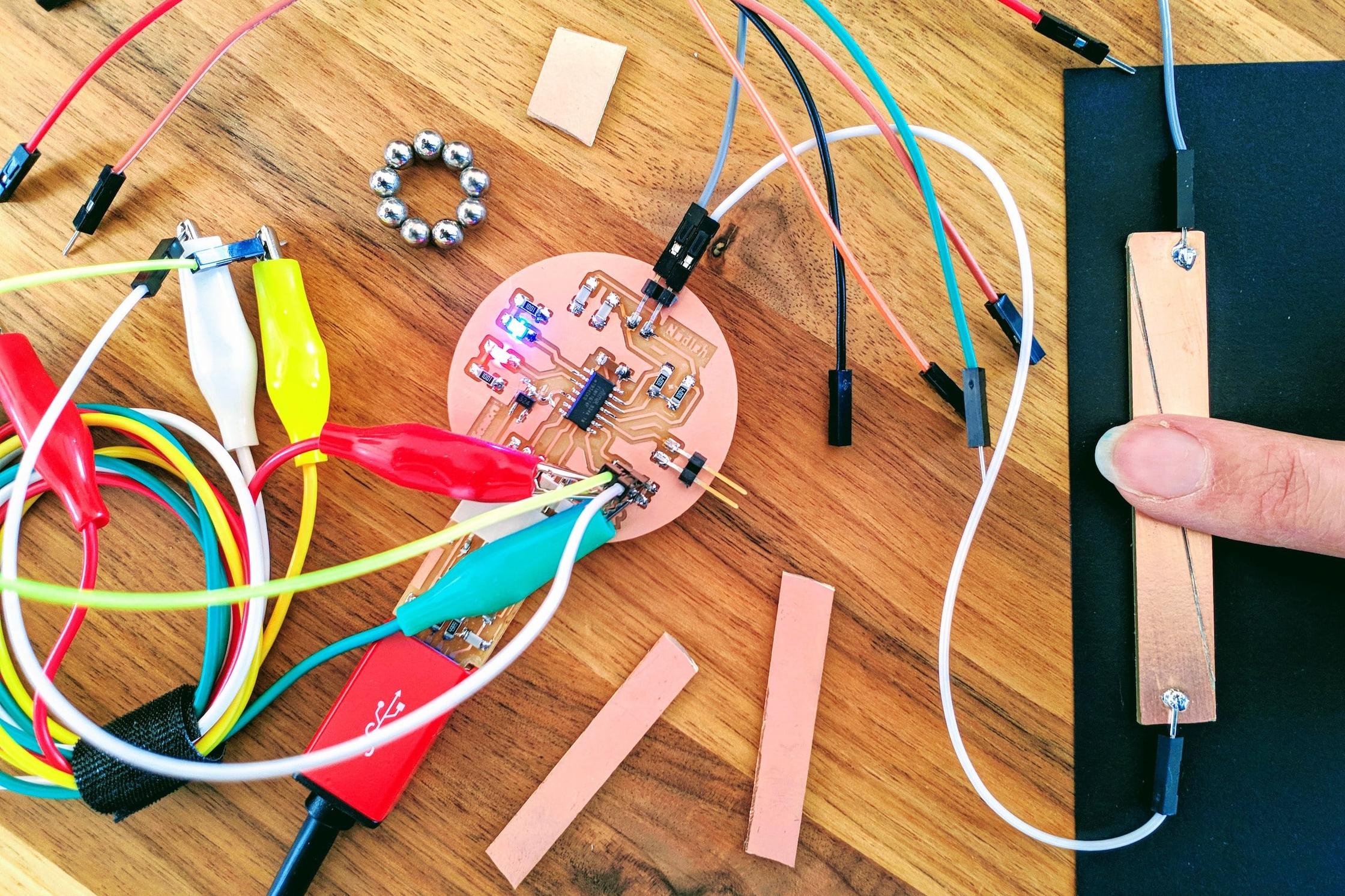Running our Fab Lab Amsterdam for over eight years now we are regularly asked to share experiences on how to set up a lab yourself. Early on we realized that setting up a lab is not simply putting a set of machines in a space. You need people, people that are passionate about making and take ownership over the lab. With a lab you want to create Maker Culture and Movement. That is something you need to grow. You need ambassadors for your cause and a range of different activity programmes to engage them. You need to create an enabling environment: optimal circumstances that act in favour of the movement.
To start, here are some pointers for the space and inventory that will support your enabling environment.
Space
When designing the physical Fab Lab space we need to pay attention to the different functions and usages of that space. Think of spaces to sketch and draw, to ease and let it all sink in, spaces to demonstrate work (in progress), spaces to place stock and spaces to actually work with the different digital fabrication machines. We need to identify all aspects of building the physical Fab Lab in the designated space.
Context
A Fablab is a physical space, but is by definition also a hub in a network. To optimize impact and output it is important requirement is to create maximum dialogue with the Fab Labs surroundings. The relationship with the environment around the lab needs to be as open and explicit as possible. I.e. doors and/or walls could be made transparent.
Entrance
The Fab Lab entrance is very important. It needs to be open and inviting as possible to give even the shyest but curious a warm welcome.
Tinkering and Fabrication
Fab Lab work spaces include both places to work with the machines and their connected computers, as well as places to do desk research, draft, design, conduct material research and discuss projects and solutions. Some machines (in particular the big milling machine) create a lot of noise and dust while in use. These machines need to be placed in a closed space.
Showroom
Finished and unfinished projects, prototypes and results of material research should be visible in the space as much as possible. Finished projects will inspire visitors and give the insight in the possibilities of Fab Lab. Projects under construction show the process of rapid prototyping, trying out, making mistakes and support visitors in their understanding of how to come from A to B.
Fab Charter
The Fab Charter is an agreement amongst Fab Lab users. It describes what is a Fab Lab, what is in it, who can use a Fab Lab, what are the rules of play and what are your responsibilities as a visitor. For new visitors and as a reminder for regulars, the Fab Charter is often printed (i.e. on sticker material with the vinyl cutter) and placed on a central wall in the space.
Machines
The Fab Lab inventory is continuously evolving. The ultimate goal is an inventory being able to reproduce itself. The standard Fab Academy ready inventory consists of a laser cutter, a precision milling machine, a vinyl cutter, a large milling machine and a video conferencing system. Inventory list for a fully equipped Fab Lab can be found here.
Documentation and booking platform
The online platform is a website that makes visible all projects, workshops and events related to Fab Lab. The documentation of the projects ideally include cut sheets, and are of such a quality that everyone following the instructions can reproduce the work or modify to personal needs or goals. Also, through the website and back-end machine reservations can be managed. It shows an up to date overview of machine availability on particular time slots.
Visit the Fab Foundation website for a complete overview and an extensive FAQ.


